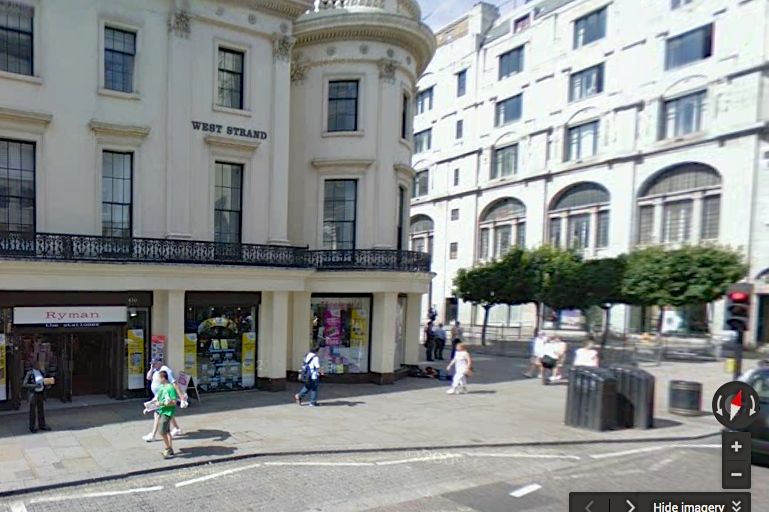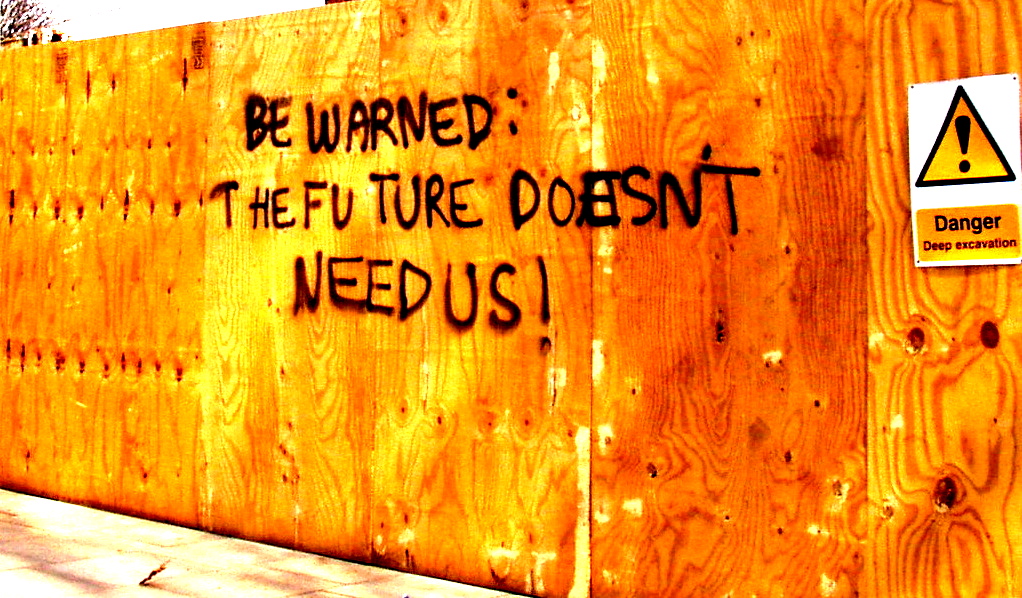Street Haunting, an essay by Virginia Woolf written around 1930, describes a walk across London on the pretext of needing to buy a pencil. It attempts to track the writer’s footsteps in terms of the walker’s think-steps, or vice versa – an account of what the writer observes while she’s walking through the streets of Holborn and Covent Garden to the Strand, and what she imagines – basically, everything that goes through her head on her journey.
You could try to follow in the footsteps of Street Haunting by wandering down through Covent Garden yourself or even taking a walk through Google Street View to Rymans on the Strand, but that wouldn’t put you into Woolf’s head in the same way, or immerse yourself in early 20th-century London through her eyes, whether you find that irritatingly precious or delight in the flow of her prose. Either way, Woolf aims to break with the normal experience of walking “wrapt … in some narcotic dream”, as the commuters heading home seem to do. She is lucky enough to have leisure time to indulge in a stroll through the streets – even if, as a tentative flaneuse rather than self-assured flaneur, she feels she has to have the excuse of buying a stationery item.
One image that stuck in my head is the way that Woolf talks about her eye as an independent being, pulling her along: “The eye is not a miner, not a diver, not a seeker after buried treasure. It floats us smoothly down a stream; resting, pausing, the brain sleeps perhaps as it looks.
In Street Haunting sight is the most important way of experiencing the world: her eye is what keeps Woolf “gliding smoothly on the surface” of the city, with its sights flowing through Woolf’s eye into her brain, swirling around, picking up all sorts of detritus and then trickling out through her hand (and the crucial pencil) onto the page; then flowing from the page through our eyes and into our brains – where it settles and sinks in.

Of course this stream-of-consciousness effect is an illusion – Woolf’s essay is actually a highly structured and crafted piece of writing, the stream filtered, mediated and adulterated at every stage of its flow, even before it reaches the brain of the reader. And Woolf’s representation of thoughts and perceptions is very different from James Joyce’s, which in turn is miles away from Kerouac’s or Proust’s or Roberto Bolaño’s or Nicholson Baker’s.
But they’re all bound up with the modernist idea that the writer can and should strive to convey subjective experience as accurately as possible – recreate it for the reader to experience for themselves, across the gap of time and geography. The more I think about this the more disturbing I find it – there’s something peculiarly intimate and claustrophobic about getting inside someone else’s brain and seeing the world through their eyes.
The week I read Street Haunting, Facebook paid a big wad of money for Oculus, a company that develops virtual reality technology. Its Rift headset is supposedly the best attempt so far at a device that immerses its user in a virtual world – although it looks both silly and slightly alarming. Soon you can buy your own if you have £500 or so to spare – it will be on sale in John Lewis and Harrods from September – and try it out for yourself.

Oculus Rift was developed for gaming but Facebook’s acquisition of it has raised all sorts of ideas about what else it might be used for. Oculus founder Palmer Luckey suggests: “People already spend hours a day on Facebook. What if it was truly engaging and immersive, rather than a filtered version of your real self?” And Facebook head Mark Zuckerberg says the Oculus Rift headset has the effect of making “you feel like you’re actually present in another place with other people”. According to Zuckerberg, “By feeling truly present, you can share unbounded spaces and experiences with the people in your life. Imagine sharing not just moments with your friends online, but entire experiences and adventures.”
So I could stay in my room in London and take a walk – sorry, share an adventure – with a friend in Moscow or Melbourne or Taipei or Tel Aviv or Ramallah or Madrid or Athens, by sending the free-floating eye of my VR headset out to glide along the currents of cyberspace. Is this the culmination of what Woolf and others like her were trying to do with their humble low-tech tools of words on paper?
Zuckerberg adds: “People who try it say it’s different from anything they’ve ever experienced in their lives.” Which suggests that either the people he’s talked to have a rather limited experience of real life that precludes being actually present in places with other people, or it’s nothing like reality.
Chris Milk, who runs a VR production company called VRSE.works, also insists on calling a VR work an “experience” according to Wired magazine – although the magazine points out the technology is still at the stage where the virtual reality experience is cumbersome and sometimes vomit-inducing. The word “experience” comes from the Latin experientia “an experiment; knowledge gained by repeated trials” and was originally used in the context of observation as the source of knowledge, carrying the idea of looking closely at the world – which comes back to what Woolf seems to be attempting in Street Haunting.
What the VR pioneers skip over is that an experience involves more than the eye – walking through a city, for example, means hearing the sounds, smelling smells, sometimes tasting food or drink, touching textures, having aching muscles, sweating, getting wet in the rain or sunburnt or dirty as well as seeing the sights. Will VR’s next goal be to deliver an all-round, fully immersive experience, indistinguishable from the embodied experience of actually being in a real place? What happens to “real reality” if it manages to achieve that?
Virginia Woolf came up thanks to a walk around the West End with the Walking Reading Group .




